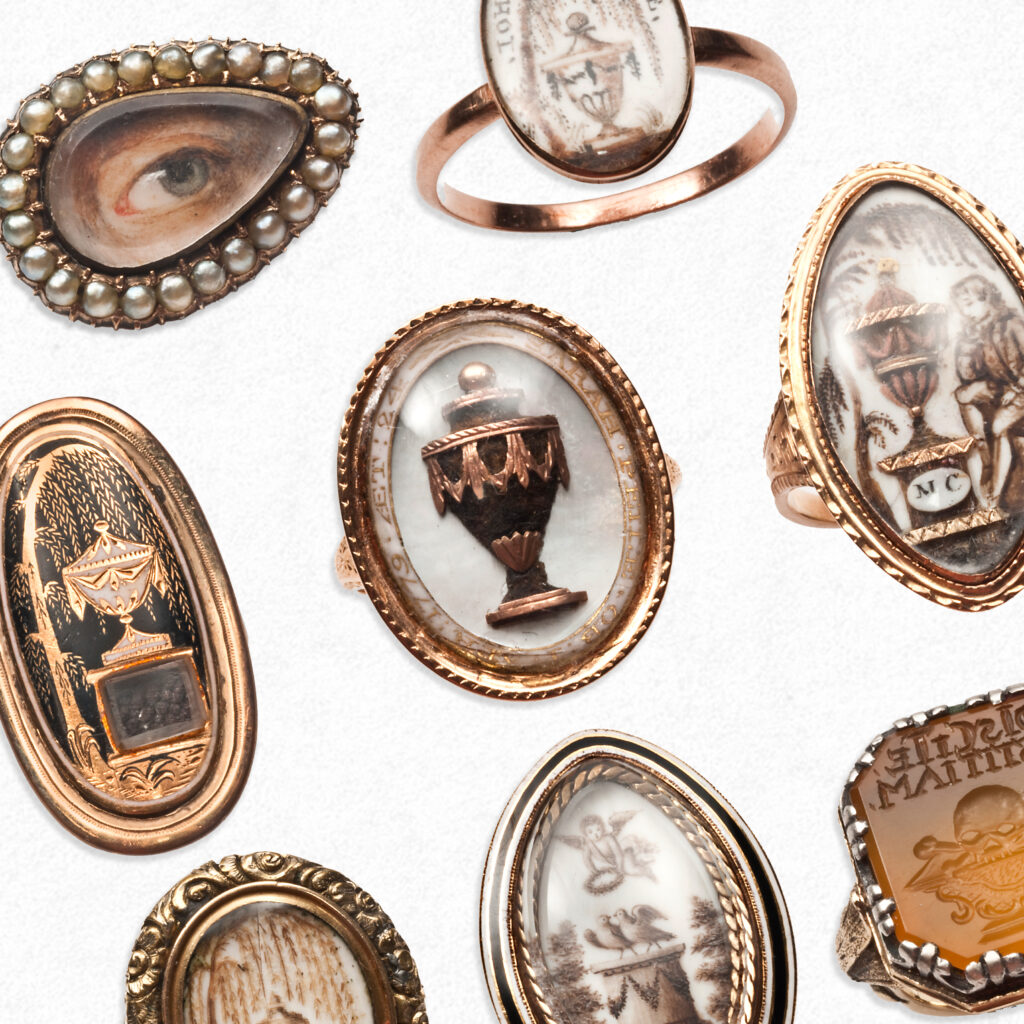Textiles: 18th Century, Part 2
Male costume in the 18th century still retains the conventions of the 17th century, but adapts closer to popular fashion of the time. Mourning suits were cut to the same style as their daily clothes. By mid century, coat skirts became flared with the addition of pleats in the back and side seams and by the 1770s, slimmer lines were once again fashionable. Black woollen cloth was acceptable for first mourning, where French etiquette was followed. In Second mourning, black suits and stockings were permitted and grey was allowed. The trains of black mourning cloaks were graded as per the rank of the wearer (Chief Mourners or otherwise), black hats were knotted with hatbands in black or white, which varied for status. Hatbands fell down the wearer’s backs shoulder scarves or sashes were worn at funerals by the less important and men and women wore white accessories at the burial of a woman or child. Crape, silk and to a lesser degree, satin were also used. It was around this time that the armband, a staple in men’s mourning fashion came into use and remains even today.
Convention carried through from the 17th century was starting to lose its prominence in male costume, mourning would be carried over through the 19th century by women and the armband would be the symbolic mourning device used by men. For men, the rule for First Court Mourning was black woolen suits, without fashionable buttons on sleeves or pockets. Muslin or lawn cravats, rather than shirt frills were common and lace cuffs replaced ‘weepers’. Crape hatbands, woolen stockings, shammy shoes, gloves, black (mourning) swords and shoe buckles were proper accessories. Fringed linen was permitted for Second mourning.
Throughout the social change that allowed this greater permission of mourning, there was a tremendous strain on tailors to provide mourning costume on a large scale. Culturally, there was a large amount of friction between the lower middle and upper classes, as there was no precedence for inter-class mixing. Changing art styles and the emergence of mass print and communications and greater dissemination of wealth would lead to the absolute peak of the industry in the 19th century.







